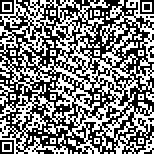| 摘要: |
| [摘要] 目的 应用耳聋基因芯片对广西地区先天性耳聋患者及其直系家属进行筛查,分析广西地区耳聋的主要致聋基因及突变特点。方法 招募2017年12月至2022年12月广西壮族自治区人民医院收治的非综合征型耳聋(NSHL)患者及其直系血缘亲属共336例作为研究对象。采集外周血并提取DNA,应用耳聋基因芯片检测受试者耳聋相关的4个热点基因中的16个突变位点:GJB2(35delG、176-191del16、235delC、299-300delAT),GJB3(538C>T、547G>A),SLC26A4(IVS7-2A>G、2168A>G、1174A>T、1226G>A、1229C>T、IVS15+5G>A、1975G>C、2027T>A),线粒体12S rRNA(1494C>T、1555A>G),统计并分析其耳聋基因突变特点。结果 158例耳聋患者中共检出常见耳聋基因突变24例(15.19%)。其中SLC26A4基因突变15例(9.49%),GJB2基因突变8例(5.06%),线粒体12S rRNA突变1例(0.63%)。178例听力正常的耳聋患者亲属共检出22例基因突变,检出率为12.36%。其中SLC26A4基因突变12例(6.74%),GJB2基因突变10例(5.62%)。结论 SLC26A4和GJB2是广西地区人群遗传性耳聋的常见突变基因,其中SLC26A4c.IVS7-2A>G位点突变率最高,其次为GJB2c.235delC突变,应引起临床医师关注。 |
| 关键词: 先天性遗传性耳聋 耳聋基因 基因芯片 |
| DOI:10.3969/j.issn.1674-3806.2023.05.04 |
| 分类号:R 764 |
| 基金项目:国家自然科学基金项目(编号:82060190);广西科技厅重点研发项目(编号:桂科AB17292089);广西医疗卫生适宜技术开发与推广应用项目(编号:S2017078、S201421-05);广西卫健委科研项目(编号:Z20170366、Z2016593、Z2014215) |
|
| Analysis on the characteristics of common deafness gene mutations in congenital deafness patients and their family members in Guangxi region |
|
LIN Zuan-ping, YUN Lu, GAN Han-xiao, et al.
|
|
Department of Otolaryngology Head and Neck, the People′s Hospital of Guangxi Zhuang Autonomous Region(Guangxi Academy of Medical Sciences), Nanning 530021, China; Guilin Medical University, Guangxi 541004, China
|
| Abstract: |
| [Abstract] Objective To screen congenital deafness patients and their immediate family members in Guangxi region using the deafness gene chip detection method, and to analyze the main deafness-causing genes and the characteristics of deafness gene mutations in Guangxi region. Methods A total of 336 patients with nonsyndromic hearing loss(NSHL) who were admitted to the People′s Hospital of Guangxi Zhuang Autonomous Region from December 2017 to December 2022 and their immediate family members were recruited as the research subjects. The peripheral blood of the patients was collected and their deoxyribonucleic acids(DNAs) were extracted, and the deafness gene chips were used to detect 16 mutation sites of 4 hot genes related to deafness. The 16 mutation sites included GJB2(35delG, 176-191del16, 235delC, 299-300delAT), GJB3(538C>T, 547G>A), SLC26A4(IVS7-2A>G, 2168A>G, 1174A>T, 1226G>A, 1229C>T, IVS15+5G>A, 1975G>C, 2027T>A) and mitochondrial 12S rRNA(1494C>T, 1555A>G), and the characteristics of these deafness gene mutations were analyzed statistically. Results The common deafness gene mutations in 24 cases of 158 deaf patients(15.19%) were detected. Among the common deafness gene mutations, there were 15 cases(9.49%) of SLC26A4 gene mutation, 8 cases(5.06%) of GJB2 gene mutation, and 1 case(0.63%) of mitochondrial 12S rRNA mutation. The common deafness gene mutations in 22 cases of 178 deaf patients′ relatives with normal hearing were detected, with a detection rate of 12.36%. Among the common deafness gene mutations, there were 12 cases(6.74%) of SLC26A4 gene mutation and 10 cases(5.62%) of GJB2 gene mutation. Conclusion SLC26A4 and GJB2 are the common deafness gene mutations of hereditary deafness in a population in Guangxi region, and the mutation rate of SLC26A4c.IVS7-2A>G site is the highest, followed by GJB2c.235delC mutation, which should be paid attention to by clinicians. |
| Key words: Congenital hereditary deafness Deafness gene Gene chip |

